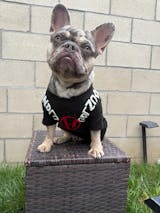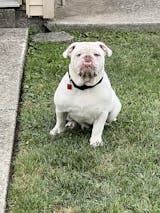Dog Rashes: Causes, Symptoms, and Prevention
Hey there, fellow dog lovers! Have you ever noticed your furry friend scratching excessively or sporting some suspicious red spots? Well, chances are they might be dealing with a pesky rash. But don’t worry, we’ve got you covered with everything you need to know about dog rashes: from preventing them to understanding what’s causing all the itchiness, and spotting those telltale signs.

What’s the Deal with Dog Rashes?
Okay, picture this: your pup is having a blast frolicking in the grass and chasing around squirrels when suddenly, bam! They start scratching at their fur like crazy. This may be a revealing sign of a dog rash.
Dog rashes can stem from various factors primarily attributed to allergies, infections, or other irritants. Allergic reactions from food, environmental triggers like pollen and dust, and contact with certain materials can lead to skin inflammation and infections in pups. Parasites such as fleas, ticks, or mites can also trigger allergic responses. Additionally, bacterial or fungal infections due to scratches, bites, or uncleanliness can also manifest as rashes. It’s best practice to keep a close eye on your pup and check their skin daily for any signs of discomfort or irritation on their skin.
Spotting the Signs:
Now that you know what might be causing all the fuss, how do you know if your pup is actually dealing with a rash? Keep an eye out for these telltale signs:
- Redness of the skin: Dogs with rashes often display redness, indicating inflammation or irritation of the skin.
- Itchiness (scratching or gnawing on the skin or ears): Constant scratching or chewing at the affected areas signifies discomfort and can worsen the rash, leading to further irritation and potential skin damage.
- Excessive hair loss or bald patches: Rashes may cause hair loss or bald patches in affected areas, as the dog's scratching or the inflammation itself damages the hair follicles, hindering normal hair growth.
- Flaky or oily skin: Changes in skin texture such as flakiness or increased oiliness often accompany rashes, indicating disruptions in the skin's natural barrier function.
- Bumps, scabs, or crusts on the skin: Raised bumps, scabs, or crusts can develop on the skin surface as a result of inflammation, infection, or the dog's self-traumatization through scratching or licking.
- Hot spots: Often caused by a dog repeatedly licking, chewing, or scratching the area, hot spots are localized areas of intense inflammation and moisture, typically resulting from self-trauma, which require prompt attention to prevent worsening or secondary infections.
- Head shaking: Dogs with ear rashes may shake their heads frequently, indicating discomfort or irritation within the ears, often associated with bacterial or yeast infections. Consider incorporating Squishface Ear Wipes into your daily dog care grooming routine to ensure your dog’s ears are well-cared for, while also preventing wax buildup in the ears.
- Chronic changes to the skin due to repeated skin problems: Prolonged or recurrent rashes can lead to structural changes in the skin, such as thickening, scarring, or changes in pigmentation, indicating underlying chronic skin issues.
Preventing the Itchy Madness:
Now, wouldn’t it be awesome if we could stop those rashes from affecting our pups in the first place? Here’s the some helpful tips on keeping your doggo rash-free:
- Healthy Diet: Yup, you heard that right! A balanced diet full of nutritional benefits can help keep your pup’s immune system in optimal shape, making them less likely to get those pesky rashes. Read more on dog nutrition to ensure your pup is eating a well-balanced diet full of vitamins, minerals, and essential amino and fatty acids.
- Regular Baths: Regular baths are essential for maintaining a healthy dog's skin by removing dirt, allergens, and irritants that can contribute to rashes. Using a soothing dog shampoo specifically formulated for canine skin can further aid in preventing irritation and soothing existing rashes. When bathing your dog, ensure to dilute the shampoo properly, focus on massaging it gently into the skin, and thoroughly rinse to remove all residue, promoting a clean and comfortable coat.
- Allergen Awareness: Just like us, dogs can be allergic to stuff too! Keep an eye out for any new foods, plants, or pesky fleas that might trigger an allergic reaction in your furry pal.
- Squishface Wrinkle Wipes: Great for a daily wipe down, consider incorporating Squishface Wrinkle Wipes into your dog’s routine. Containing limited ingredients such as ketoconazole and chlorhexidine, these wipes are great in the fight against bacteria, yeast, and fungus. With a quick wipe-down after outdoor adventures, you can help keep your pup free of pollen, dust, and other environmental factors that can result in rashes.
The Bottom Line:
Understanding the symptoms and causes of dog rashes empowers us as dog parents to better care for our furry buddies. By recognizing red flags like redness, itching, or unusual skin texture early on, we can take proactive steps to address underlying issues and alleviate discomfort. Incorporating products like Squishface wrinkle wipes for daily maintenance and Squishface ear wipes for ear hygiene into our daily dog care routine can play a vital role in preventing rashes and promoting overall skin health. With diligence and proper care, we can ensure our dogs enjoy a life free from the discomfort of rashes, allowing them to thrive in good health and happiness.
Be sure to follow us on TikTok, Instagram, Facebook, Pinterest, YouTube, and visit our blog weekly for more tips on caring for your adored doggo, and the latest on all things Squishface!










